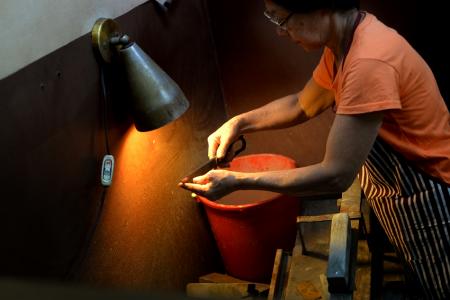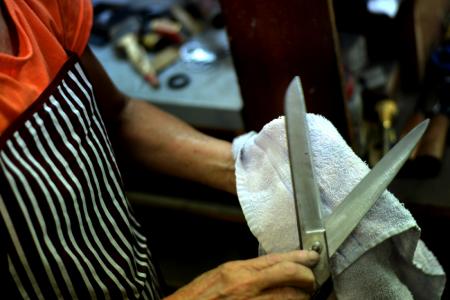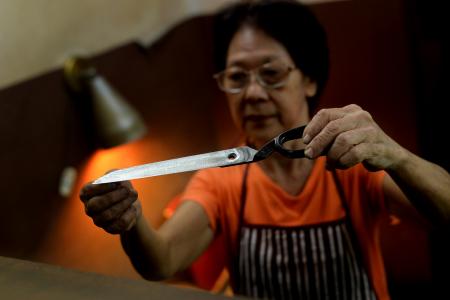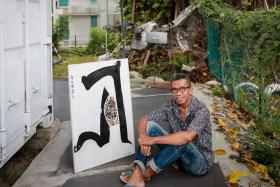Vanishing traditional trades: Future on a knife-edge
Even as the Republic marches into the future, a small group of traditional tradesmen continues to soldier on
Walking past a string of hardware shops, fronted by workmen wielding power tools surrounded by nuts, bolts, wire and rope, a passerby might easily miss Pow Li.
Tucked away in the back corner of People's Park Complex, the shopfront is inconspicuous, save for the sound of a relentless grinding and a faint whiff of something burning coming from within.
In the back of the shop, Madam Lee Hwee Chin, a small and unassuming woman who turns 70 this year, is bent over a stone grinder.
Her wiry arms are sturdy as she expertly runs the sharp edges of a cleaver against the screeching edge of a furiously rotating stone disc.
She is unfazed by the burst of red hot sparks spurting from the grinder.
"You can't wear gloves! You need your bare fingers to feel if the blade is smooth and sharp enough," Madam Lee explains.
"After so many years, I don't feel the heat or the sharpness of the blades anymore."
Over 40 years in the business have left her with rough and calloused fingers. "I don't even have fingerprints anymore! Look at my thumbs. I always have problems at Customs when I travel."

Pow Li was started by her father, and she began helping out when she was in her 20s, eventually taking over when her father retired.
"It takes about three years to learn the trade, but I would say it takes at least 10 years to really master it," she muses.
"I ruined so many knives and shears when I was young! Customers always complained to my father and I had to sometimes pay them back," she laughs.
Knife sharpening is a two-step process.

First, Madam Lee takes it to the grinder to smoothen the sides, removing any friction-causing unevenness in texture.
She also ensures that the blade tapers in thickness towards the contact edge.
The blade is dipped into a waiting bucket of water in between grinds, to prevent heat damage.
Next, she manually grinds the tapered end on a block of stone to sharpen it.
The stone grinder she uses is the original built by her father when he opened the shop. It stands on taller legs than store-bought grinders, allowing the user to stand more comfortably without having to stoop as low.

Through the years, Pow Li has sharpened the blades of knives, shears and scissors of hawkers, fruit sellers, hairdressers and tailors from all corners of the island.
"There are very few of us in this line of work today as it is difficult to learn. So my business has been kept afloat over the years by my regulars," she says.

"It is a humble trade. But the most satisfying thing for me is taking a blade that was previously thought to be unsalvageable and transforming it again into tip-top shape and delighting its owner."
When asked about plans for the future, she shakes her head. "I haven't thought about the future yet. We'll take it one step at a time."
This article was first published in The Business Times Weekend, August 6, 2017
Get The New Paper on your phone with the free TNP app. Download from the Apple App Store or Google Play Store now



